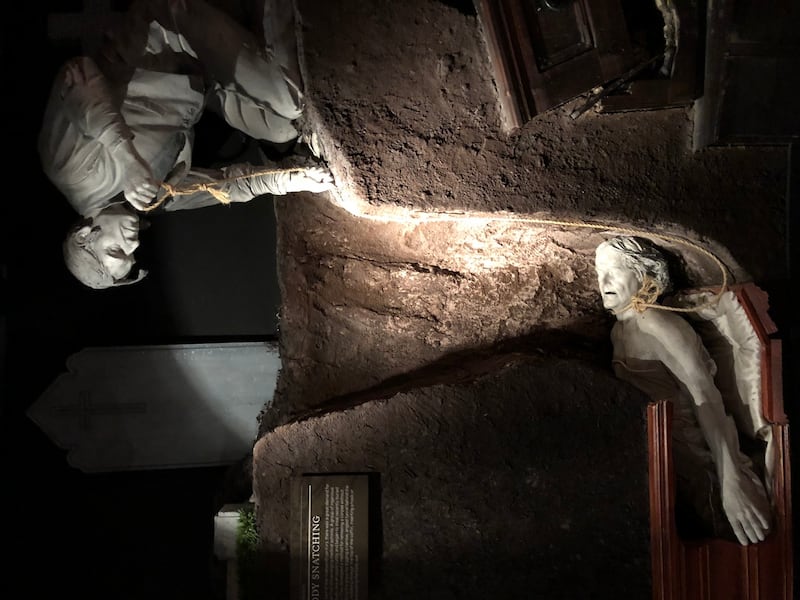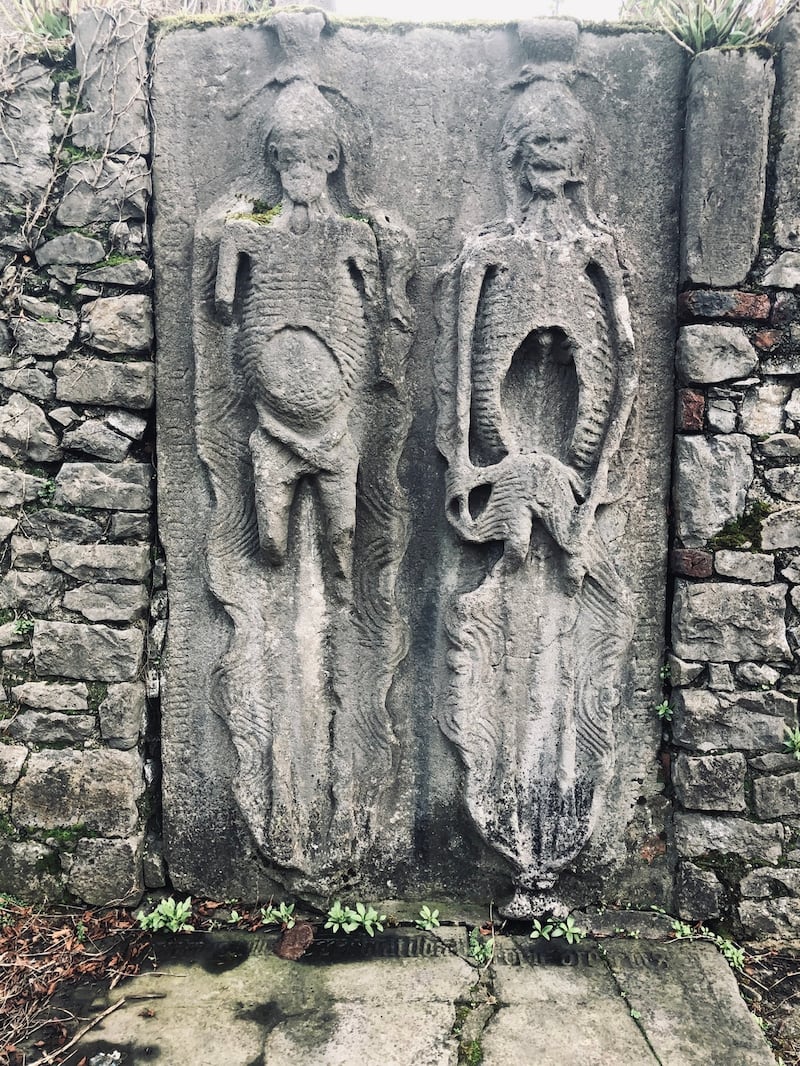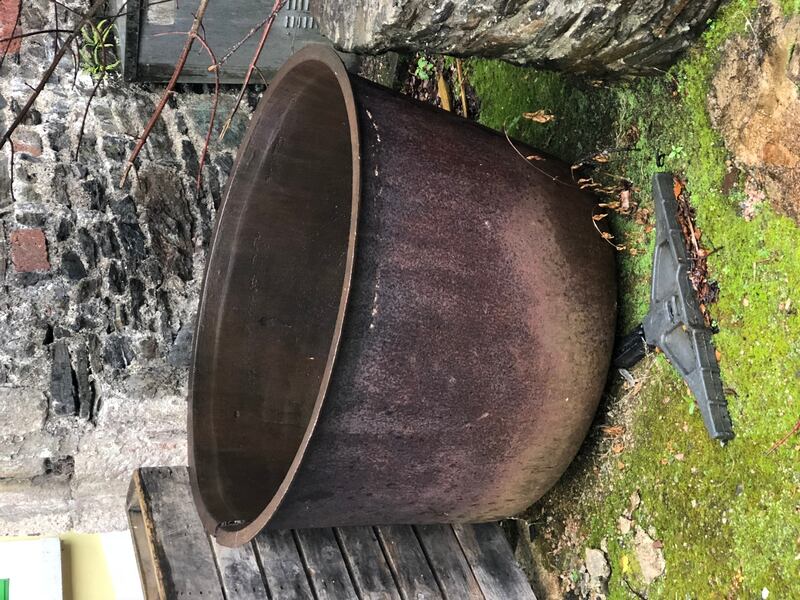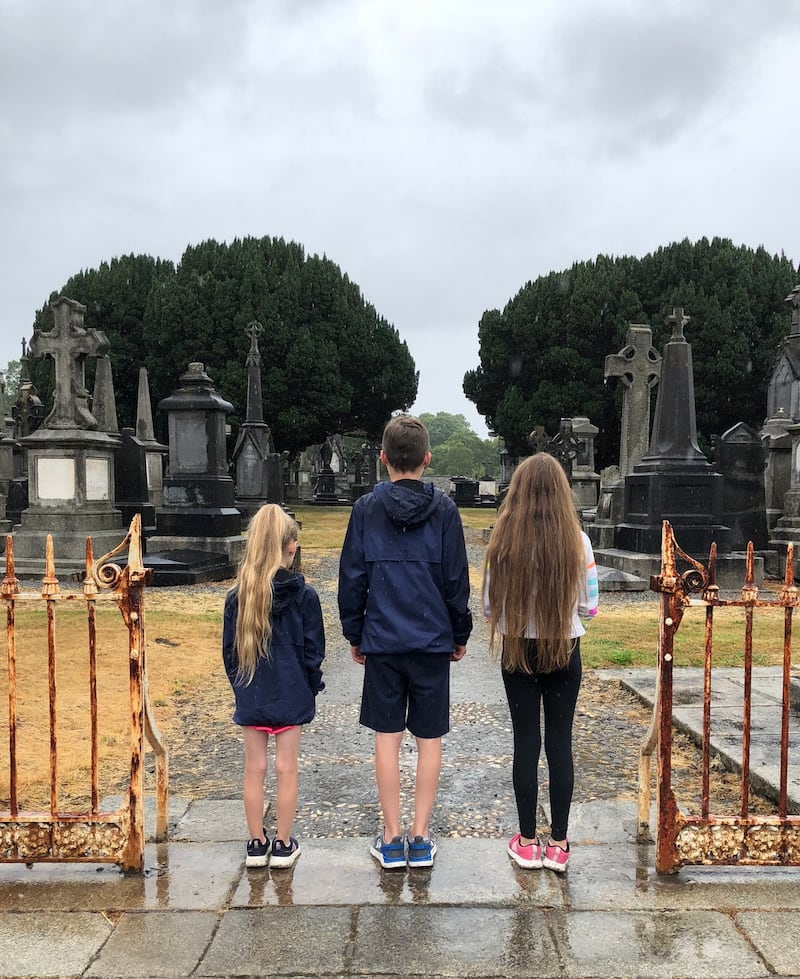“If readers are put off by my grandmother laying herself out on the first page it might not be the book for them,” Gillian O’Brien says.
I’ve asked who she thinks will be the readers of her new book, The Darkness Echoing, exploring Ireland’s places of famine, death and rebellion.
Dublin-born O'Brien, a reader in modern Irish history at Liverpool's John Moores University, is referring to the introduction of her ironically-titled first chapter, "Welcome". O'Brien's late grandmother, Mai, was fond of trying out the look she wanted when her time came to be laid out in death for a wake. She dressed up in various outfits, knotted rosary beads around her wrists, closed her eyes and asked her granddaughter to take a photograph, so she could veto the results. "She was very cheerfully morbid," O'Brien says.
It's this matter-of-fact approach to the customs of death in Ireland and the way we have chosen to commemorate our dead over the decades that informs this book throughout.
O'Brien spends part of the year teaching in Liverpool, and part of it working in Ireland as a historical consultant for museum and heritage sites. She got the idea for her "dark tourism" book when working on the development of Spike Island into a heritage site. Spike Island, in Cork Harbour, is a former fort that became a convict depot and latterly a prison.
“They have almost no artefacts there, but there were a number of themes they had decided they wanted to develop, such as the convict story,” she says.


The island's most famous former inmate was nationalist John Mitchel.
“He was only there for three days, but we knew that would attract people’s attention. How do you balance the challenge of getting people to the site and then deciding what stories that you tell at the site? I was brought in on that project to try and navigate a way to tell as many stories as possible without it just being about one element.”
The experience was the catalyst to make her want to explore how other places of incarceration, famine and conflict in Ireland are formally interpreted by museums and heritage centres. There followed two years of intermittent travel around the country, visiting some 200 sites for her research.
These included locations such as King John's Castle in Limerick; the Ulster Transport Museum in Co Down; Strokestown Park in Co Roscommon; the Great Blasket Centre in Co Kerry; the Medieval Mile Museum in Kilkenny; and Kilmainham Gaol in Dublin among many others.
“I wanted to see how we tell our stories in as many museums as possible,” she says. “My underwhelming impression, having been around over 200 sites, is that we do still tell quite a traditional story.”
What’s her definition of “traditional”?
"It is unusual to go to a general history site and not to be told something about 1916 even though 1916 took place geographically in very few places. Michael Collins, Parnell and and de Valera all get shoehorned into the narrative, but I don't think that is necessarily the most interesting way of telling a story. But it's the bit that they [museum facilitators] know people will recognise from a school syllabus."
O”Brien references “dark tourism” several times in her book. This is a relatively new way of branding and marketing existing sites for tourism purposes; sites where man’s inhumanity to man was perpetrated.


The former concentration camps at Auschwitz in Poland, for instance, where more than a million people died. Or the Tuoi Sleng genocide museum in Phnom Penh in Cambodia: a former secondary school turned horrific place of torture under Pol Pot. Only 15 of the 12,000 who were sent there survived.
“It’s only in the last five or six years in Ireland that we’re started hearing that expression, ‘dark tourism’. Sites here are generally reluctant to use the expression, because it implies a certain exploitation of people,” she says.
Every time we go into a museum, or heritage centre, or read a board at a historical site somewhere in the country we are experiencing someone’s particular interpretation of our history. An interpretation which, by definition, has been edited. So whose responsibility is it to tell the story of our past?
"The State has responsibility for it, but historians have responsibility too. There is no one version of being Irish. The State and Fáilte Ireland and all of those bodies have a responsibility to be accurate. But we can't know about the past in a definitive way. Also, most of the records we have were left by the literate and those who had money, so the stories we tell will always be a bit skewed as a result," says O'Brien.
“Fáilte Ireland do a very good job of marketing Ireland abroad, but they have all these themes, like ‘castles and conquests’, ‘Vikings and heroes’. It gives a very simplified version of Irish history. My biggest issue... is that Fáilte Ireland should not be giving out grants for people to develop museums.”
Why?
“Because they want people to develop museums in the Fáilte Ireland image. We should be telling complex stories. O’Brien took her young nieces and nephews with her on several of her research field trips to museums and heritage sites. “My big take away from going around and around all these sites was it’s really never about the big fancy things. You could really do so much with so little.
“One of the reasons I took the kids with me was to see what their attention span was like, and what did they go for. They were never once fascinated by the touch screens, and I thought that was quite revealing. The planners could have saved thousands in the process, and they could have done a lot more with a lot less money. And the risks of putting so much money into big new projects is that they then remain static for years.”
Were there a common narrative in what she saw as she toured the country?
“In a lot of the museums it is based on what have they got to show – artefacts. And how do we get people there? So if they have one famous person associated with the place, that person’s story will be told even if it has the most tangential association with the site.
“Also, the standard nationalist narrative does get more support than it really deserves. At the moment 1916 still trumps everything else as the most-told story from our history.”


In the course of her travels O’Brien examined the souvenirs for sale in the accompanying gift shops. In the same way that departure lounges at airports distil the narratives of the countries they represent in the form of the souvenirs they sell, so too do museum gift shops. It’s bizarre to consider that our most marketed souvenir of Ireland is of a leprechaun – something that does not actually exist, a fable.
Along the way O’Brien bought various souvenirs.
She purchased Billy, the Lego Orangeman, complete with bowler hat and sash, at the Museum of Orange Heritage in Belfast.
At the Titanic Experience in Cobh, Co Cork, she bought a Titanic snow globe; the ship immersed in sparkly water.
Images of the sites O’Brien visited during her research are on gillianobrien.net
The Darkness Echoing, Exploring Ireland’s places of Famine, Death and Rebellion, by Gillian O’Brien, is published by Doubleday Ireland
This article was edited on November 6th 2020.

















